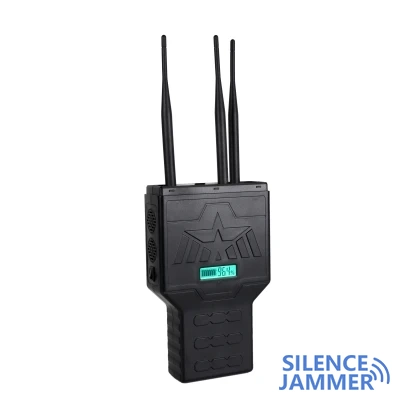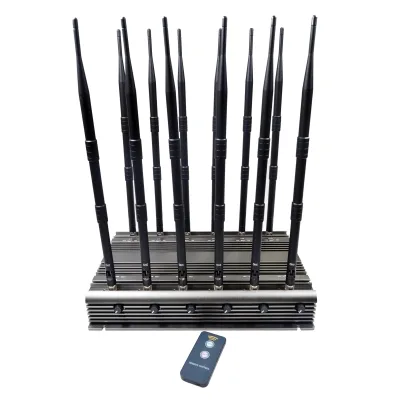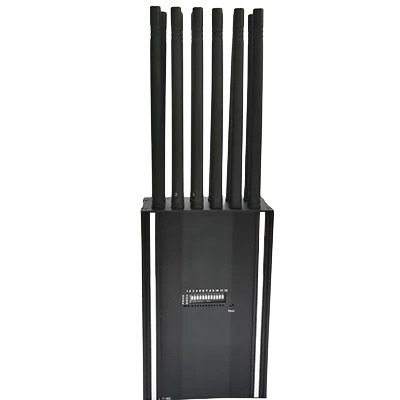
Despite the installation of mobile phone signal jammers in Puzhal Prison, mobile phones are still frequently used by prisoners and have become a problem for prison management. As prison management continues to increase its crackdown, prisoners' means of hiding mobile phones in prison have become more and more secretive. Especially for repeat offenders, they take advantage of loopholes in the prison environment and specific locations to hide and use mobile phones in various clever ways to continue to keep in touch with the outside world.
Mobile phones rampant in prisons
Recently, the prison management department conducted a full-scale surprise search in Puzhal Prison and finally seized 9 mobile phones from different areas. The search operation covered buildings 1 to 4 of the prison, even including the highly guarded building 1, and also seized two batteries and three chargers at different locations. This operation once again revealed the widespread and hidden nature of mobile phone circulation in prisons.

It is understood that although the cell phone signal blockers were installed in the prison two months ago, this move has not completely curbed the use of mobile phones by prisoners. According to prison officials, the prison registered a total of 72 violations of prisoners' use of mobile phones throughout last year, and this year has not yet ended, and similar cases have reached 64. The effect of the phone signal blocker jammer seems to be limited and has not completely prevented prisoners from using mobile phones to communicate with the outside world.
Clever hiding methods: prisoners' concealment skills
According to an unnamed prison official, prisoners are very experienced in hiding mobile phones and have many tricks. For example, they will hide their mobile phones in toilets, rainwater collection points, and even in shoes. "Some prisoners will tear off the heels of slippers, hide their mobile phones in them, and then glue them back together to avoid searches." Prisoners will use daily belongings to hide their mobile phones in seemingly inconspicuous places, such as clothes, tableware, and personal cleaning products.
These habitual criminals who are familiar with prison management have mastered the methods of circumventing cellphone blockers with their own "prison experience", and can even cleverly avoid signal shielding areas and find places that are not affected by cellphone signal blockers to use their mobile phones. This also means that they have ample time and opportunities to keep in touch with the outside world, which not only poses a threat to prison security management, but also poses a potential safety hazard.
Connivance of prison staff and safety hazards
Although prison management departments have been increasing their crackdown on prisoners' illegal use of mobile phones, the connivance of some prison guards towards prisoners' use of mobile phones has also contributed to the spread of this problem. It has been reported that some prison staff accept bribes to provide prisoners with mobile phones and accessories, which undoubtedly increases the difficulty of management. With the installation of blocker jammers, it is more difficult for prisoners to obtain mobile phone signals through traditional means, so they are more dependent on the help of internal personnel.

In this context, mobile phones have become a tool for criminal activities within prisons. It is reported that many cases are planned in prisons, and prisoners can use mobile phones to command external accomplices to carry out criminal activities. The proliferation of mobile phones in prisons has also invisibly promoted the continuation and escalation of external criminal activities.
Countermeasures of prison management
- Faced with the endless means of prisoners using mobile phones, prison management has gradually strengthened the security control of prisons. In addition to regular surprise inspections, it is also constantly optimizing the technical facilities of prisons. However,cellular jammer equipment still faces technical challenges in actual application. The prison administration must make further investments in the debugging and updating of equipment to ensure that the equipment can cover all signal reception blind spots in the prison and truly achieve effective shielding of mobile phone signals.
- The management also plans to strengthen internal monitoring measures and implement stricter supervision on the behavior of prison staff to prevent internal personnel from assisting prisoners in obtaining communication equipment. This is not only to maintain security and order in the prison, but also to eliminate criminal activities in the society outside the prison.
- In the future, in order to better curb prisoners' illegal communications, the prison administration can explore more high-tech means. For example, real-time monitoring technology can be used to monitor the signal conditions in various areas of the prison, and mobile phones used in violation of regulations can be discovered and located in a timely manner. In addition, the use of spectrum analysis technology to detect abnormal signal sources in the prison will help monitor and troubleshoot potential illegal devices and further improve the safety management level of the prison.
The problem of mobile phone proliferation faced by Puzhal Prison reflects the management difficulties of contemporary prisons in the information age. Although cellular signal jammers can provide a certain degree of suppression, prisoners use innovative means to continuously break through the barriers of cellular blockers, highlighting the technological lag in prison security management. To this end, prison management departments must start from multiple aspects such as technology, management, and personnel supervision, and constantly innovate prevention and control methods to strive to achieve all-round control of prison internal communications. This is not only a guarantee of prison safety, but also a strong support for social security.




